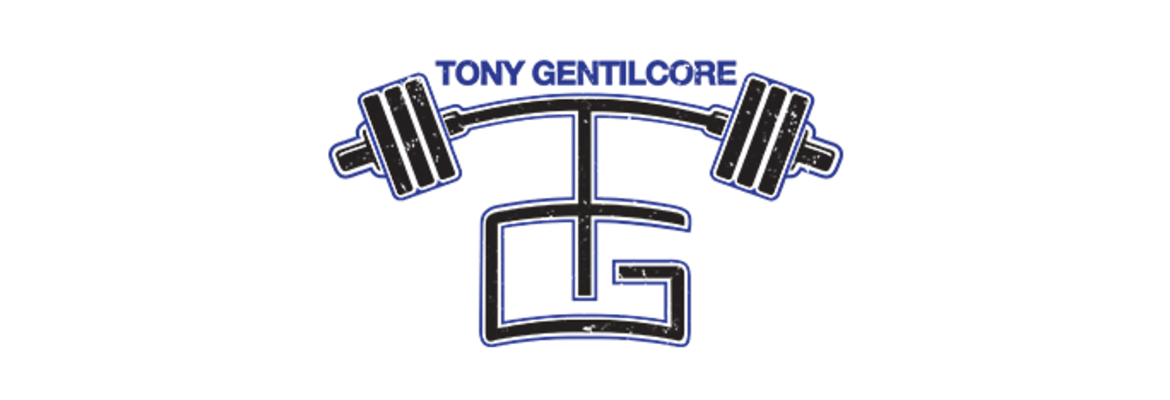I wanted to use a blog title that fit my personality more.
Like:
“Life as a Fitness Professional: See Brick Wall. Throw Face Into It. Repeat.”

But, you know, SEO and all.
Being a Personal Trainer/Coach Isn’t All Kitten Kisses and Rainbows
Forgive the nebulous tone out of the gate.
Let me be clear: I love what I do, and I wouldn’t have chosen to do it for the past 20 or so years if I didn’t gain some semblance of enjoyment from it.
[Although, truth be told, if Hollywood came knocking at my door tomorrow asking me to be the next Jason Bourne I’d peace out faster than you can say undulated periodization.]
I’ve been very fortunate and lucky (with equal parts hard work and insatiable consistency) building a career that not only provides an immense amount of pride and gratitude, but also satisfaction and sustenance.
Now, we could make the argument that being a fitness professional is a pretty sweet gig.
I mean, you get paid to hang out in a gym all day and wear sweatpants. There’s also a low-barrier to entry, which can be good and bad.
Good in that it allows people to pursue their passion without dropping $40,000 per year on a degree. Bad in that, well, there’s a low-barrier to entry.
Anyone can become a personal trainer.
Additionally, I could go on forever listing all the other benefits to being a fitness professional:
- You help and inspire people on a daily basis.
- Free gym membership.
- You more or less set your own schedule.
- You can eat out of a Pyrex container and no one will judge you.
- Did I mention you get to wear sweatpants to work everyday?
- You get to wear sweatpants to work everyday.
There is a dark side, however.
While the numbers can vary, and it’s more or less an arbitrary, ball-park figure: many fitness professionals – personal trainers in particular – have a “life span” of 1-3 years.
Feeding that statistic, the average personal trainer makes roughly $32,000 per year, working a split-shift 60 hour per week schedule1 often with minimal (if any) benefits.
- Spotty health insurance
- No 401k plan. It can happen, but it’s rare.
- Limited (if any) paid vacation.
- But hey, you get to wear sweatpants.
While by no means a dirt poor scenario, there’s a reason a very finite number of fitness professionals ever hit the magical six-figure mark.
The ones that do often either work in a big city or in a very affluent area where people can afford high(er) price points for their services. Running the math, a trainer could work a 20-hour week charging $100 per session and easily make six-figures in a year.
However, that’s not realistic for most.
Not many can charge $100 per hour ($40-$50 is more like it), and not many are taking 100% of the profit. I.e., for those working out of a commercial gym, it’s often standard they take 30-50% of the cut (depending on what kind of “tier system” implemented).2
Not only that, cost of living has to be taken into consideration. Sure, trainers living in a more urban area can charge more, but they’re also paying $2000 per month to live in a closet (and $16 for a burger).
Another thing to consider is this:
This is NOT a “Demand” Career
Being a fitness professional means you’re in the service industry. How many people in the service industry do you know who are making bank?
Not only that…it’s not a “demand” career.
There’s always going to be a demand for funeral home directors, electricians, doctors, and, unfortunately, used car sales(wo)men.
Personal trainers and strength coaches? Not so much.
When the economy is stagnant people have a tendency to chop off what’s expendable. If it’s a matter of putting food on the table or paying someone 2x per week to take them through a killer front squat Tabata circuit while balancing on two kettlebells, what do you think is going to win out?
So, what can be done to not burn out and set the odds in your favor?
First: read THIS. <—The holy grail isn’t necessarily owning your own gym.
1) Grind, Hustle, [Insert Motivational Word Here]
To be honest, I hate the connotation of “grinding” or “hustling.” Every time I see a Tweet or IG status of someone saying how they’re up early “grinding” or how much they’re” hustling,” I want to jump into a live volcano.
I get it, though.
You’re reading anything and everything Gary Vaynerchuk has in print or paper and you’re listening to all of his podcasts.
I did too, for about three days. And then I got over it. His message, while good, just comes across as a broken record to me.
I don’t want to be Gary Vee, and I don’t think Gary Vee wants you to be Gary Vee either.
He works….all……the…….time.
Even he will admit he’s an outlier when it comes to work ethic and loving the grind.
There IS a degree of grinding and hustling that’s inherently conjoined to the fitness industry.
We work when others don’t.
Too, it’s a very, very, VERY saturated market…and you better bet your ass you need to do something to separate yourself from the masses (and by extension, begin to build a brand).
Being epically good at what you do is step #1.
This doesn’t require Twitter followers or a status update. It requires hard work, consistency, maintaining integrity, along with empathy and gratitude.
“Building a “brand” isn’t a social media illusion. Things like integrity, empathy, & gratitude (along with being good at what you do) count.”
What many refer to as “grinding” is just, you know, going to work. Like everyone else.
However, there’s a difference between going to work and actually going to work and taking pride in it…and working towards something bigger and better.
Learn and respect that difference.
2) “Brand” Building
It’s 2021: You better recognize that “building a brand” isn’t anchored on this idea that you need to optimize website SEO or hire a photographer to take nice looking photographs of you eating a kale salad next to a Ferrari so you can post them on your social media.
Renowned coach and speaker, Brett Bartholomew, shared a powerful message recently:
View this post on Instagram
As Brett notes, SOCIAL SKILLS are what’s missing in this industry; not more certifications and licensures. Brand building (and by extension, success) isn’t so much about putting more letters next to your name or having a 3x bodyweight deadlift.
It’s about CONNECTION and having the social skills necessary to build healthy and long-lasting client relationships & rapport.
NOTE: Anyone interested in that topic should come to Boston this November to attend Dr. Lisa Lewis’s 2-day workshop: Inside the Coach’s Mind. (wink wink, nudge nudge).
👇👇👇👇👇👇👇👇👇

Social media is certainly part of the equation, however.
“But wait, Tony, didn’t you just say that social networks are a waste of time?”
Nope, that’s not at all what I said.
I said “do the work.”
Coach. Interact. Get people results. Get good at what you do.
CURATE RELATIONSHIPS.
Social media should serve as a complement to your brand. Not BE the brand. Pete Dupuis wrote an awesome article a few years ago on what Cressey Sports Performance did to build their brand.
“Believe it or not, we were open for business for 293 days before our Cressey Sports Performance website went live. In fact, we strung together more than 1,200 days of operation before realizing we needed to get CSP up on Twitter.”
Anecdotally, I’ll be the first to admit I lucked out in this regard.
I helped build CSP from scratch, and both Eric (Cressey) and Pete encouraged me to build my own brand within a brand. I served as an ambassador for the CSP name, but was also able to leverage that to help construct the brand of “Tony Gentilcore.”

Having Eric and Pete in my corner helped, a lot.
It also helped that I jumped on the website and social media bandwagon before it became a “thing.”
I wrote my first blog post in 2006. I now have over 200o+ posts on this site. And this is not counting the hundreds of articles I’ve written on top of that for other websites.
It wasn’t until 2009-2010 that I invested in myself and hired someone to make a customized website for me.
Quick shoutout to Copter Labs on that front.
Nevertheless, I wrote hundreds of blog posts on my site and interacted with a lot of my readership before I “graduated” to being paid to write for other sites. I often joke that my high school English teachers would shit a copy of “Catcher in the Rye” if they knew I was a paid writer.
Moreover, once I started gaining more traction with my writing I started being asked to present at conferences and started to also be invited to gyms across the world to put on workshops.
Being transparent, open to other ideas, amicable, a good listener, and generally not an asshole have all served me well in growing my “brand.”
All of this to say: I now have other streams of revenue to not only bolster my brand, but to also help augment my coaching. I don’t have to be on the floor 30-40 hours per week (as it stands now, I coach 15-20 hours per week). What’s more, if COVID-19 taught us anything in this industry, it’s that having more “diversity” with your revenue streams is imperative.
- In-person coaching
- Distance/online coaching
- Writing
- Presenting/workshops (virtual *& in-person)
- Affiliate income
- Digital products/resources
- Mentorships
- And, sure, sponsorships and “influencing” can be tossed on the list too.
NONE of this happened over-night. And, if I were to be 100% honest: It’s only now – year 19 into my career – where I feel like I’m starting to “get it.”
Not be a Debbie Downer and all, there’s A LOT of noise out there. More and more fitness pros are out there vying for everyone else’s attention and a piece of the social media pie, and it’s becoming more saturated by the day.
It’s becoming harder and harder to make a name for yourself (if that’s what you choose to do).
However, it’s not an insurmountable feat to rise above the chaos.
The key, though: amazing, unparalleled, consistent content.
And not being an unapproachable tool canoe.
That helps too.



